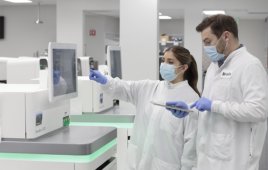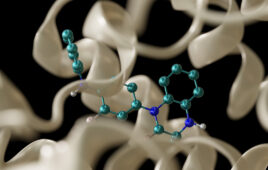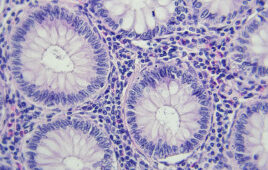Scientists at the Center for Translational Medicine at Thomas Jefferson University in Philadelphia have found that a protein that appears to have protective and perhaps healing effects for failing hearts also plays a similar role in high blood pressure. They found lower-than-normal levels of the protein S100A1 in cells that line blood vessel walls in animals with high blood pressure.
When the researchers, led by Patrick Most, MD, assistant professor of Medicine at Jefferson Medical College and former postdoctoral fellow Sven Pleger, MD, experimentally lowered the amount of S100A1 protein in the animals’ blood vessels, they were able to dramatically increase blood pressure. The preliminary results identified a novel and rather unanticipated biological function of the protein and suggest that S100A1 could be a therapeutic target for blood pressure treatment. The team’s findings appear in the journal Circulation Research.
“S100A1 seems to be a major player in the regulation of blood pressure and vascular function,” says Dr. Most. “The mechanisms by which this works is by producing more nitric oxide (NO) in the endothelial cells that line the vessel walls. A lack of NO enables hypertension.”
According to Dr. Most, S100A1 is an alternative mechanism for increasing heart function. It directly regulates calcium circulation, which drives the contractions in the heart. Dr. Most’s laboratory has been working on S100A1’s role in disease hearts for more than a decade, and together with a group led by Walter Koch, Ph.D, director of the Center for Translational Medicine, they have proven that loss of the protein causes diseased hearts to fail and that the protein is a potential target for gene therapy for heart failure.
S100A1, part of a larger family of proteins called S100, is primarily found at high levels in muscle, particularly the heart. Falling levels of S100A1 are critical in the loss of heart-pumping strength after a heart attack and play an important role in the progression to heart failure. A previous study in 1989 showed that the protein was reduced by as much as 50 percent in patients with heart failure.
In the current work, Dr. Most and colleague Andrea Eckhart, PhD, associate professor of Medicine at Jefferson Medical College, and their team found in both laboratory experiments and in animal models that blood vessels that lack S100A1 cannot relax as well as normal vessels. “If the animal doesn’t have S100A1, it has hypertension,” he says. “The mechanism is based more or less on the availability of nitric oxide. It seems that S100A1 also regulates calcium cycling in the endothelial cell, and calcium is needed in the endothelial cell to stimulate NO production. The loss of S100A1 impairs the calcium mobilization of the endothelial cell – that’s the link between less calcium, less NO, hypertension and endothelial dysfunction.
Release date: May 5, 2008
Source: Jefferson University Hospitals
Filed Under: Genomics/Proteomics




